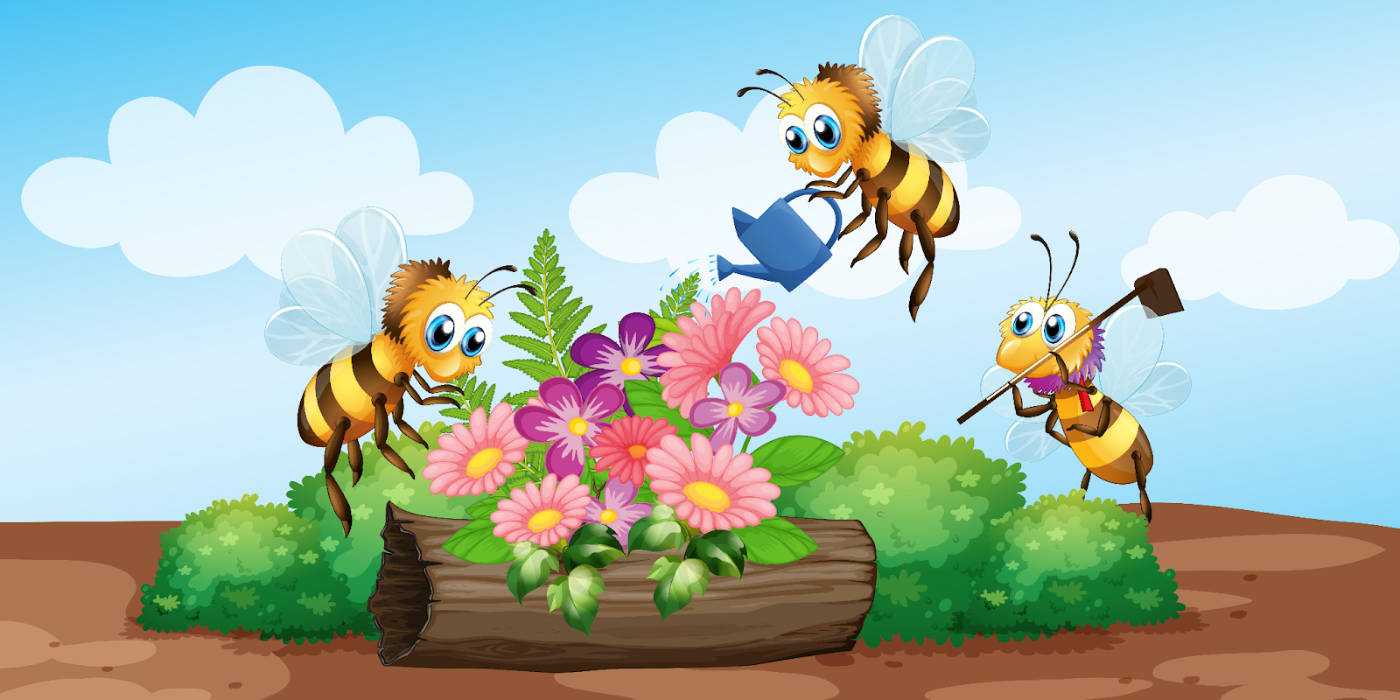
Spring Planting for Honeybees
How to Help Your Busy Pollinators
Spring is a time of renewal, and for beekeepers, it's a time to help our busy pollinators thrive. Honeybees need a diverse range of pollen and nectar sources to build up their colonies and produce honey. As beekeepers, we can help by providing a variety of flowers and plants for our honeybees to forage on. Let’s explore some of the best plants to include in your spring planting to help your honeybees thrive.
Why Spring Planting Matters for Honeybees
Spring is a critical time for honeybees. As the weather warms up, honeybees emerge from their hives in search of food. They need to build up their colonies and produce honey for the upcoming winter. Pollen and nectar are essential for honeybees to produce food, but not all plants are created equal. Honeybees need a variety of pollen and nectar sources to get all the nutrients they need. Without access to a diverse range of flowers and plants, honeybees may struggle to build up their colonies and produce honey.
As beekeepers, we can help by planting a diverse range of flowers and plants that bloom throughout the spring and summer. By doing so, we can ensure that our honeybees have access to the pollen and nectar they need to thrive.
Top Plants for Spring Planting
When it comes to spring planting for honeybees, there are many great options to choose from. Here are some of the best plants to include in your spring planting:
-
Fruit Trees: Fruit trees such as apple, cherry, peach, and plum are excellent sources of pollen and nectar for honeybees. They bloom early in the spring, providing honeybees with a critical food source after a long winter.
-
Dandelion: While many people consider dandelions to be a nuisance weed, they're actually a great source of pollen and nectar for honeybees. Dandelions bloom early in the spring, providing honeybees with a much-needed source of food.
-
Blueberries: Blueberries are another great source of pollen and nectar for honeybees. They bloom in the late spring and early summer, providing honeybees with a steady source of food.
-
Lavender: Lavender is a beautiful plant that also happens to be a great source of pollen and nectar for honeybees. It blooms in the late spring and early summer, providing honeybees with a much-needed source of food.
-
Clover: Clover is a common plant that's also an excellent source of pollen and nectar for honeybees. It blooms throughout the spring and summer, providing honeybees with a steady source of food.
-
Sunflowers: Sunflowers are a favorite of many pollinators, including honeybees. They bloom in the late summer and early fall, providing honeybees with a critical food source as they prepare for winter.
Tips for Spring Planting Success
To ensure that your spring planting is a success, here are some tips to keep in mind:
-
Plant a variety of flowers and plants that bloom throughout the spring and summer. This will ensure that your honeybees have access to a diverse range of pollen and nectar sources.
-
Choose plants that are native to your area. Native plants are better adapted to your climate and soil conditions, making them easier to grow and better for your honeybees.
-
Avoid using pesticides and herbicides in your garden. These chemicals can harm honeybees.
-
When planting your bee garden, consider the location carefully. Bees need plenty of sunlight to thrive, so choose a location that receives at least six hours of direct sunlight per day.
-
Once you've planted your bee garden, it's important to maintain it throughout the season. Regularly deadheading spent flowers can encourage new blooms, ensuring a continuous supply of food for your bees.
Spring planting for honeybees is an essential part of beekeeping. By providing your bees with a variety of healthy plants to forage from, you can help ensure the health and survival of your colony. When selecting plants for your bee garden, choose those that are nectar and pollen-rich and bloom at different times throughout the season. Provide a clean and reliable water source, avoid using pesticides, and maintain your garden throughout the season. With these tips, you can help ensure a healthy and thriving hive.
FAQs About Spring Planting for Honeybees
1. What are the best plants for supporting honeybees in spring?
Some of the best spring plants for honeybees include fruit trees (apple, cherry, peach, plum), dandelions, blueberries, lavender, clover, and wildflowers. These plants are rich in nectar and pollen and bloom during critical periods of the season.
2. Should I avoid any plants in my bee garden?
Avoid planting hybrid flowers bred primarily for ornamental purposes, as they often produce little to no nectar or pollen. Additionally, avoid using plants treated with systemic pesticides, which can harm pollinators.
3. How can I tell if my garden is bee-friendly?
A bee-friendly garden will feature a diverse mix of plants that bloom at different times, minimal pesticide use, and a water source for bees. Regular visits from honeybees and other pollinators are also a good sign your garden is supporting local ecosystems.
4. What should I do if my honeybees still seem undernourished?
If your colony appears undernourished, consider supplementing their diet with sugar syrup or protein patties. However, focus on addressing any underlying issues, such as insufficient floral resources or poor colony health.
5. Why is it important to plant native flowers for honeybees?
Native flowers are adapted to the local environment and often provide better nutritional value for local pollinators. They are also more likely to thrive in your garden with minimal maintenance, creating a sustainable habitat for honeybees.



Leave a comment